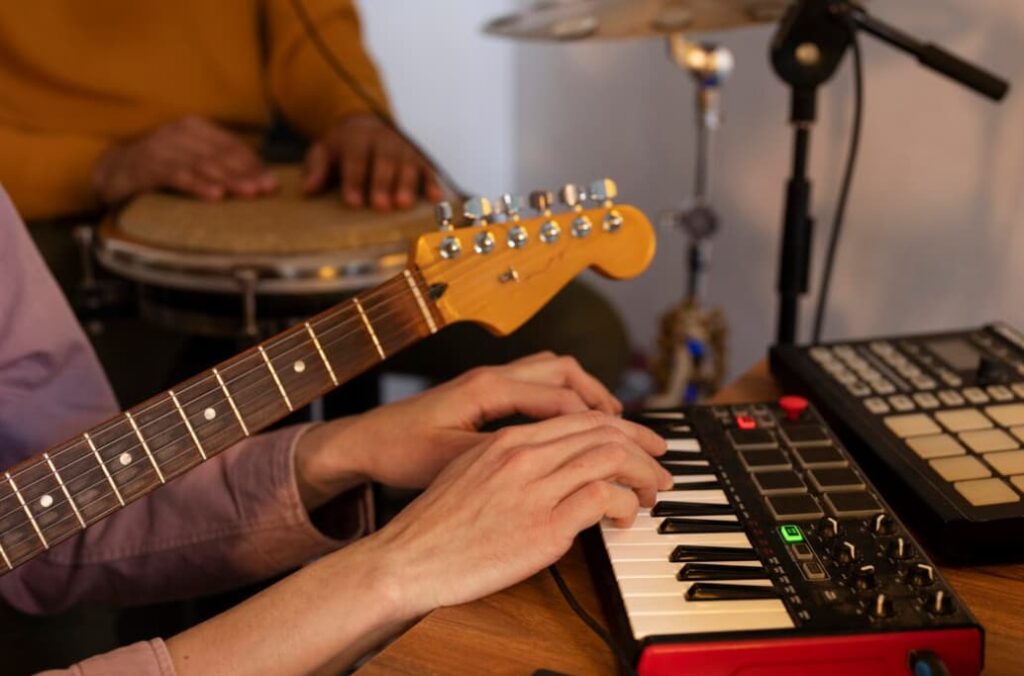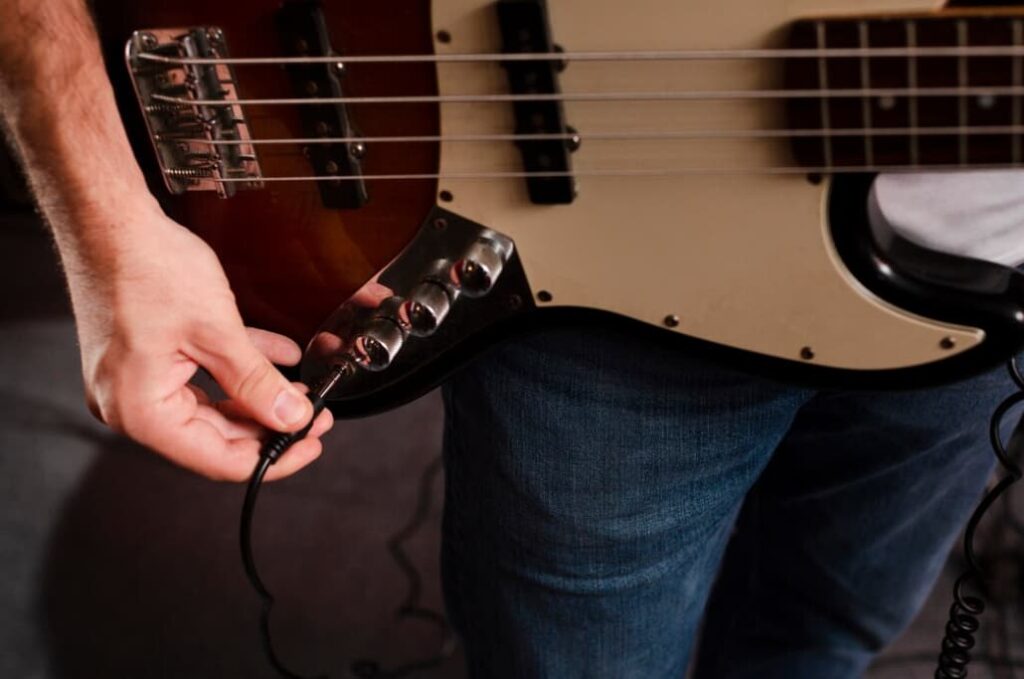No matter your level of musicianship, an out-of-tune ukulele will mar your sound. The essential first step in playing is ensuring your instrument is tuned accurately. Just like an orchestra where members tune their instruments to match a single note before a performance, tuning your ukulele follows a similar ritual. In this guide, we’ll explore various methods to tune your ukulele effectively. Upon acquiring your new ukulele, one of the first questions to arise is likely about its tuning. Tuning is crucial, akin to preparing a guitar or piano, and it’s necessary for the ukulele to sound correct. Without proper tuning, your ukulele won’t produce the melodious sound it’s capable of. There are several techniques to achieve the right tuning, from the traditional ear-based method to utilizing modern digital tools for precise results.
Online Resources for Tuning and Learning the Ukulele
Numerous websites exist on the internet, offering audio notes for tuning purposes. The process involves listening to these notes and then attempting to replicate them as accurately as possible on your ukulele. This practice requires consistent effort to achieve accuracy in finding the correct notes. However, the benefit of honing your listening skills is substantial and certainly justifies the effort involved. Beyond using an electronic tuner, if you’re receiving lessons on how to play the ukulele, your instructor can also assist in tuning the instrument.
- For those who have recently acquired a ukulele, either as a gift or out of personal interest in learning the instrument, it’s highly recommended to pursue formal lessons;
- These lessons can be accessed through online classes or in-person sessions with a tutor;
- Opting for a personal tutor offers the added advantage of hands-on guidance in tuning your ukulele;
- Moreover, there are specific online tutorials available that focus on teaching you the tuning process.
It’s crucial to understand that learning to tune your ukulele properly is an essential step before beginning to play. If you feel the need for an electronic tuner, it’s advisable to invest in one. Without a properly tuned instrument, your practice sessions may not be as effective, potentially hindering your progress in learning to play the ukulele.
Free Online Instrument Tuners
In the digital age, numerous instrument tuners are available for free download, providing musicians with convenient tools to fine-tune their instruments. While AP Tuner is a popular choice, which you install on your computer and use by playing into the microphone, it’s worth exploring other options as well. These tuners cater to various needs, offering different features and user experiences. However, a common limitation is the necessity to be near your computer to use them effectively. This article delves into a range of downloadable tuners, highlighting their unique characteristics and helping you find the best fit for your musical journey.
Traditional Tuning Methods

Securing a tuner for your ukulele ensures that you can accurately tune your instrument in any setting. The most practical choice for those who perform live or participate in ukulele groups is a clip-on tuner. These tuners are designed to detect the vibrations of the ukulele rather than its acoustic sound, making them highly effective even in loud environments. For beginners or those unsure of the correct pitch for each string, an electronic tuner is a reliable tool. It guarantees that your ukulele is tuned accurately, which is crucial for producing the right sound. As you gain experience with the instrument, you’ll gradually develop the skill to tune it by ear. The market offers a diverse range of electronic tuners, commonly referred to as chromatic tuners, which are generally affordable.
These devices guide you to the correct pitch for each string. When tuning a ukulele, remember that the fourth string (G) should be tuned higher than the third string (middle C). This tuning arrangement is slightly different from a guitar’s, but with practice, you’ll master it efficiently. The lowest note on the ukulele should be the third string, a unique aspect of ukulele tuning that distinguishes it from other string instruments.
- Pitch Pipes for Ukulele Tuning: Before the digital age, pitch pipes were a common tool for tuning instruments, functioning similarly to how online tuning notes do today. Resembling a small mouth organ, a pitch pipe for the ukulele has four holes, each producing the correct pitch for one of the ukulele strings. To use it, you blow into the relevant hole to sound a note, then tune your ukulele string to match that pitch;
- Piano as a Tuning Reference: If you have access to a piano, it can be a reliable reference for tuning your ukulele. The middle C on the piano corresponds to the C string on your ukulele. From there, you can find the other notes: E is two white keys above middle C, followed by another two keys up to G, and one more key up to reach A;
- Guitar for Ukulele Tuning: When playing in ensemble with other instruments, it’s essential to ensure your ukulele is tuned to the same pitch as the others. You can find the ukulele’s tuning notes on a guitar, which provides an easy way to ensure your ukulele is in harmony with the instruments around you. This method is particularly useful if a guitar is readily available and you’re familiar with its layout.
The ukulele tuning notes can be found on the guitar as follows:
| Note | Location on Ukulele String and Fret |
|---|---|
| G | First string, Third fret |
| C | Second string, First fret |
| E | First string open |
| A | First string, Fifth Fret |
Self-Tuning Methods

When you find yourself without a traditional tuner or a piano to tune your ukulele, there’s an effective alternative: tuning the instrument using one of its own strings as a reference. Often, the C string is the best candidate for this, as it tends to stay in tune reliably. Begin by tuning the E string: hold down the C string at the fourth fret and adjust the E string until its pitch matches this note. Next, for tuning the G string, play the E string at the third fret and tune the G string to this pitch. Lastly, to get the A string in tune, use the G string played at the second fret as your guide. This self-reliance method can yield a harmonious and well-tuned ukulele, even when you’re without your usual tuning aids. Having explored ukulele tuning, let’s now shift focus to a detailed comparison of the Fender Champion 20 and Mustang LT25 amplifiers, highlighting how such equipment can complement your musical endeavors.
Conclusion
Owning a ukulele tuner is undoubtedly beneficial for ensuring your instrument is perfectly in tune. However, developing the skill of tuning by ear is equally important and valuable for any ukulele player. This skill not only enhances your musical ear but also provides flexibility in situations where a tuner is not available. Practicing ear tuning regularly and comparing your results with a tuner can be an effective way to gauge your progress and improve your tuning accuracy. As you grow more confident in this skill, you’ll find it easier to quickly and accurately tune your ukulele in any setting, making your playing experience more enjoyable and reliable.